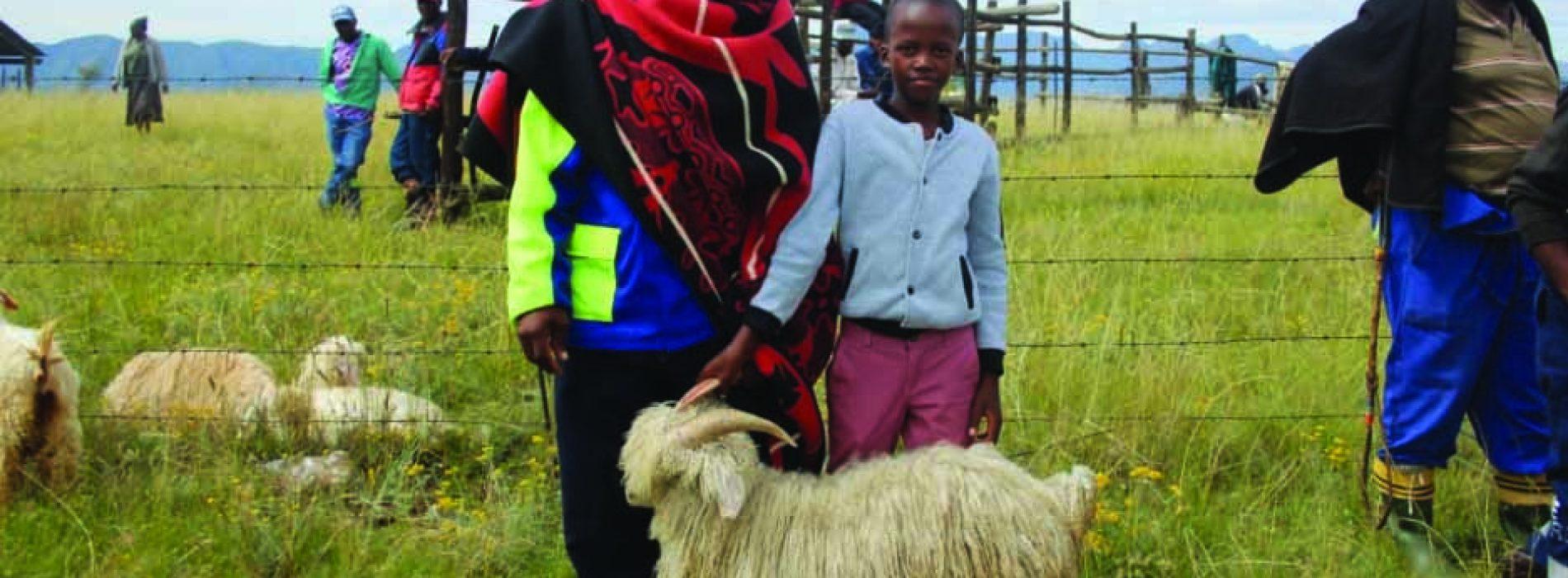Africa-Press – Lesotho. BEREA – IT is a cold and cloudy morning; smoke fills the air and women chat loudly while stirring pots of meat and samp that will later feed the multitudes of farmers attending the show.
The carefree laughter from the children playing and running around pierces through the happy commotion. The men can be seen busy with the sheep and goats, doing the final inspection, as it were, before the animals are put out on show here at the Nokong Shearing Shed in Berea.
Ask any one of them, and they will tell you they are confident they are going to come out tops and win the much coveted right to represent the district at the national show scheduled for Maseru on 29 May.
The district show that has brought the wool and mohair farmers and their families here is a tough competition that will at the end of it all must produce winners and losers, yet the atmosphere is here one marked by hearty conviviality and good cheer.
But let that not deceive you for scratch the surface a little harder and you will come face-to-face with a group of men and women in despair. That is because the sweeping changes to the marketing of wool and mohair ordered by the government and meant to benefit the farmers could be doing more harm than good, hitting them where it hurts most – the pocket.
Talk to Lejone Thelingoane, a 59-year veteran producer, and you will get a good measure of the uncertainty gripping the wool and mohair industry in Lesotho today. The farmers fear their industry could be headed for a rocky period ahead.
A serial winner at this show, who was the undefeated champion from 2013 to 2017, Thelingoane was more than eager to talk about how the wool and mohair industry has prospered in the past years and him along with it.
He boasted about how he has the best goats in the country. He told of how he was introduced to the industry as a young boy and since then has never looked back.
“For all my life the only job I know is to be a farmer, I never went to the mines or did any other job,” he says.
But ask Thelingoane about the Lesotho Wool Centre (LWC) and how farmers have struggled to get payment for wool and mohair supplied to it and all the enthusiasm and excitement you might have noticed in his voice and demeanor immediately dries up.
“I had to dip my hand in my emergency fund,” says Thelingoane.
“These are funds I am not supposed to touch but I had to. It costs money to come here and for the past years I would cover the cost of the trip with money from the previous year’s sale.
”
He was explaining how failure by the Lesotho Wool Centre to pay him for deliveries has left him so cash-strapped he had to raid his savings to fund the trip to the show and the necessary preparations.
But even more troubling for Thelingoane and his fellow farmers, they say whereas they would know how much they would get for their produce before, with the Lesotho Wool Centre it is not the case.
All they can do is wait upon the centre anxiously. Or to put it in Thelingoane’s words: “We will see how much we will be paid. This is because even those who have received payment are not satisfied with what they received.
We don’t know what we will get. ”
Another farmer, Mankatiseng Mojaki, who is also waiting for payment from the Lesotho Wool Centre, says in her case she has had to bring fewer animals to the show because she didn’t have enough money to do so.
Like Thelingoane, she hasn’t been paid for the wool and mohair that she supplied last year. In a move the government says was intended to ensure Basotho farmers were not shortchanged by international buyers, mostly from South Africa, it banned wool and mohair exports.
Through the Agriculture Marketing (Wool and Mohair Licensing) (Amendment) Regulations, 2018 farmers were ordered to sell to the Thaba-Bosiu-based Lesotho Wool Centre which now handles exports.
But farmers across the country say the Lesotho Wool Centre has to date not lived up to expectation, with many saying they either have not been paid for wool and mohair supplied or when payment has been received it is far less than what they have been getting before the centre appeared in the picture.
For its part, the Lesotho Wool Centre has said the reason some farmers have not yet been paid was because they had not provided account numbers for the centre to use to deposit the money.
It said the other reason a producer may not have been paid for wool supplied to the centre was because their wool was still sitting at the centre awaiting buyers. Not all wool delivered to the Lesotho Wool Centre is immediately sold, it said.
Lesotho Wool Centre spokesperson, Manama Letsie, says this was also part of the reason why farmers were getting part-payments which he said were for actual wool sold to buyers and not for everything a producer may have delivered to the centre.
Whatever the reasons behind the Lesotho Wool Centre’s failure to pay farmers on time, one can only hope the centre gets its act together for the sake of an industry that is a bulwark against poverty and unemployment in a country of about two million people; 24 to 28 percent of whom are without a job, according to World Bank figures.
With about 40 000 farmers producing an average 45 000 bales annually worth M1 billion, the wool and mohair industry is a vital source of employment and economic empowerment as the champion farmer Thelingoane might testify.
Having been only a shepherd, Thelingoane literally had nothing as he prepared to start out on his own. In that position, many young Basotho find it hard to resist the urge to cross the border to South Africa in search of employment.
For Thelingoane things worked out differently. His father gave him four goats and 10 sheep as the ‘start-up capital’ to start his own operation. It worked.
Today he has more than 140 goats and 180 sheep and has never had reason to want to work for someone else whether here in Lesotho or across the border in South Africa.
His sheep and goat rearing project and vegetable farming are what have provided money to send his children to school and put food on the table. Having learnt from his father, Thelingoane has been careful to make sure he also teaches his son and four daughters the skills of the trade.
“They know everything about livestock; this is because this is a family business,” says Thelingoane, who picked up 23 prizes to emerge overall winner at the district show.
It’s all very well for Thelingoane and other farmers like him to transfer the skills to the next generation but the future of the wool and mohair industry is certain only when the Lesotho Wool Centre finally steps up to the plate to support farmers with better and stable prices.






